You’re about to transform your bookshelf from a simple storage space into a sophisticated botanical display that merges literature with nature. Whether you have a compact floating shelf or a floor-to-ceiling bookcase, introducing the right plants can create visual interest, improve air quality, and add a touch of organic elegance. These nine curated ideas will help you select, arrange, and maintain plants that complement your book collection while enhancing your space’s overall aesthetic.
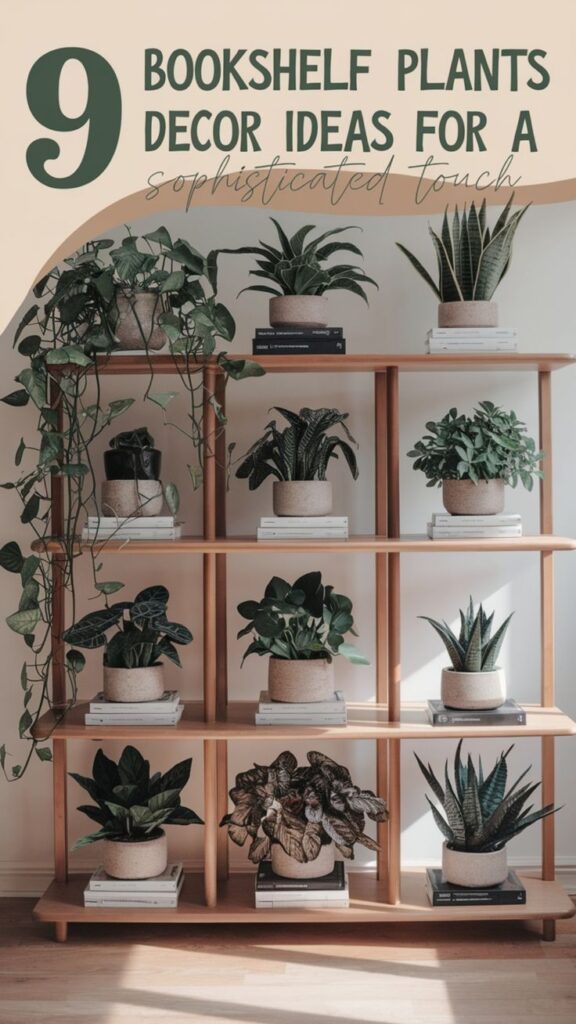
Contents
- 1 Trailing Plants for Vertical Drama
- 2 Small Succulents Between Book Stacks
- 3 Statement Air Plants as Bookends
- 4 Creating Mini Garden Vignettes
- 5 Mixing Preserved and Living Plants
- 6 Shelf-Safe Plant Lighting Solutions
- 7 Low-Maintenance Options for Busy Readers
- 8 Seasonal Plant Rotation Strategies
- 9 Color Coordination With Book Spines
Trailing Plants for Vertical Drama
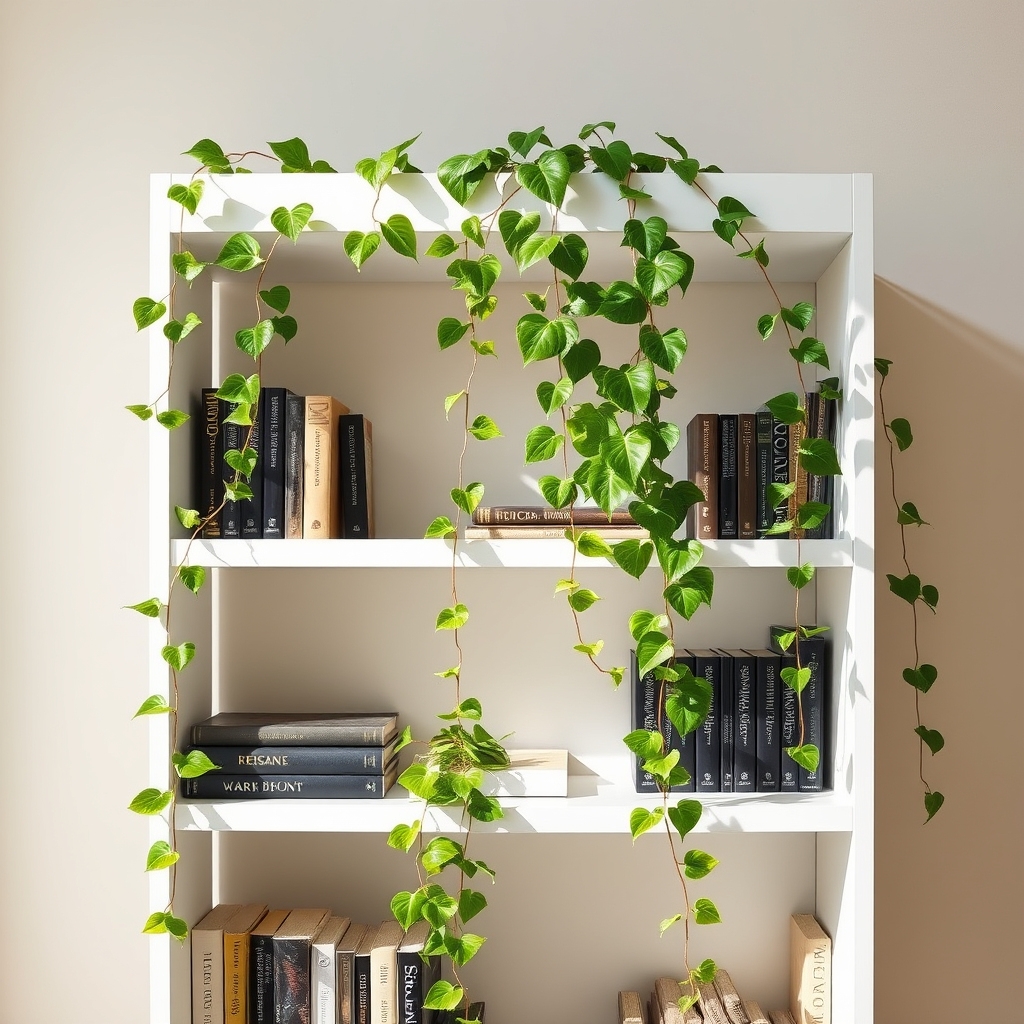
Trailing plants add cascading visual interest to bookshelves by gracefully spilling over shelf edges and creating natural curtains of foliage.
These plants feature long, flowing vines that can extend several feet downward, softening hard bookshelf lines and adding dynamic vertical movement to the space. Common examples include pothos, string of pearls, and ivy varieties.
The trailing effect works particularly well on upper shelves, allowing the plants to drape naturally without interfering with books below. This growing style maximizes vertical space while bringing an elegant, organic element to bookshelf styling.
Small Succulents Between Book Stacks
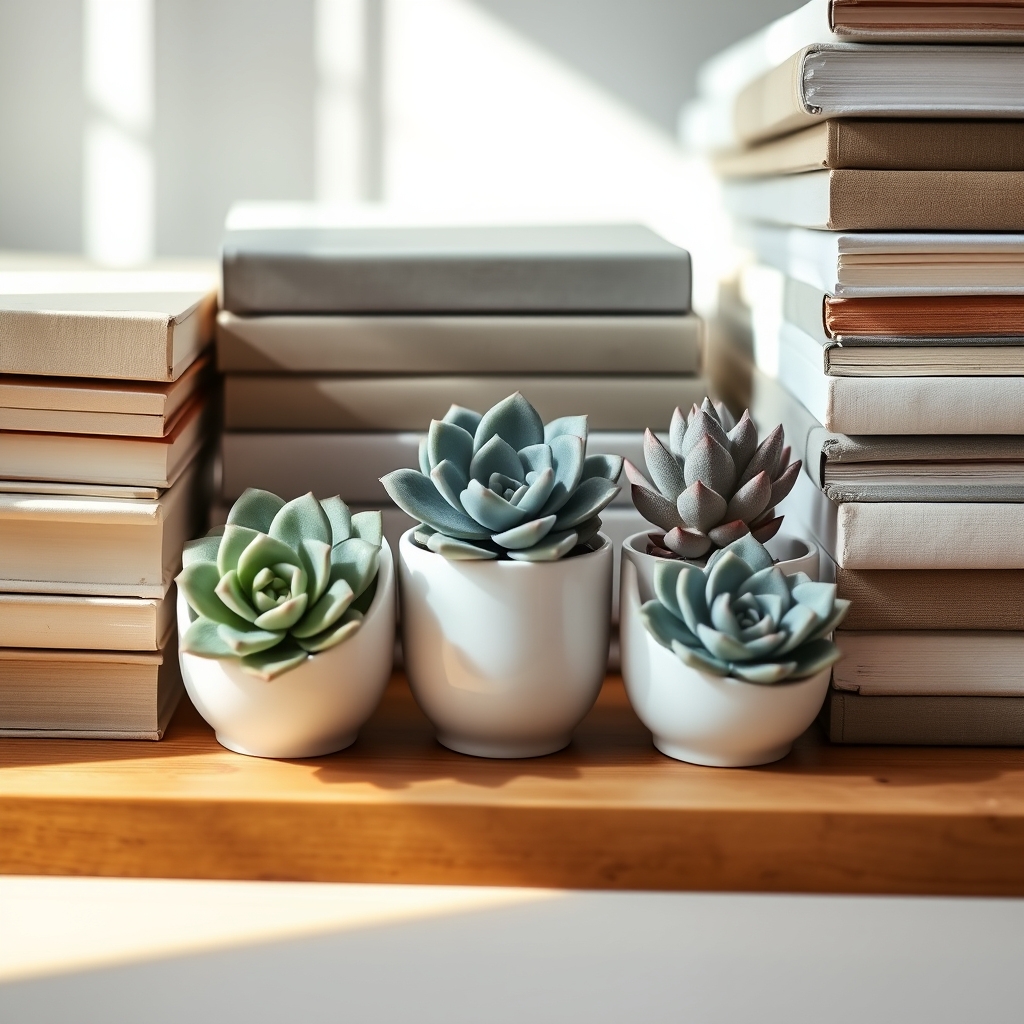
Small succulents nestled between book stacks create an organic, decorative element that breaks up the linear arrangement of books.
These compact plants typically stand 2-4 inches tall, featuring thick, fleshy leaves in various shapes and soft green to blue-gray hues.
The unique feature of this arrangement lies in how the succulents’ low maintenance nature and minimal water requirements make them ideal for bookshelf placement without risking damage to nearby books.
The plants can be displayed in tiny ceramic pots or shallow containers, allowing them to serve as natural bookends while adding visual interest through their geometric patterns and varied textures.
Statement Air Plants as Bookends
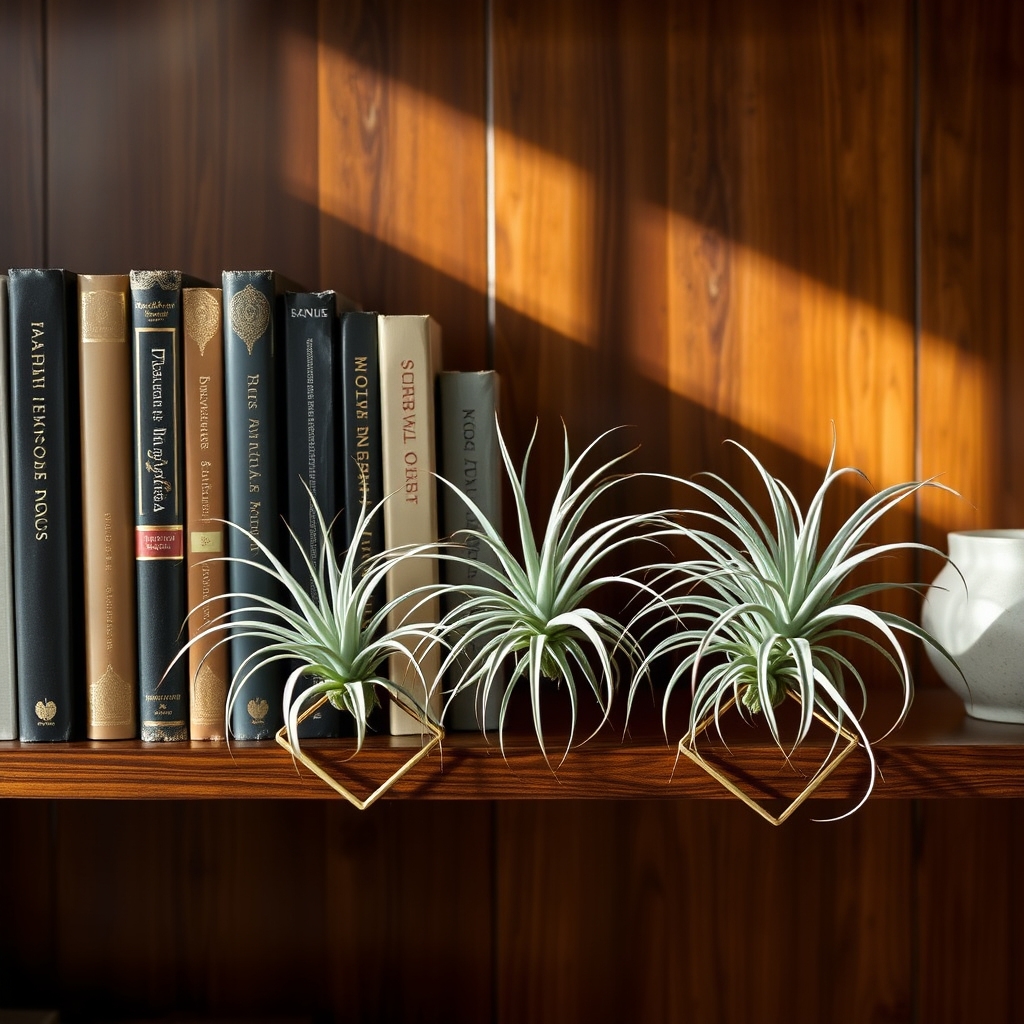
Statement air plants used as bookends create an eye-catching natural element while serving a functional purpose.
These rootless plants (Tillandsia) appear as silvery-green rosettes that float between books, requiring no soil or traditional potting. The plants can be mounted on decorative stands, geometric holders, or clear acrylic blocks to provide stability as bookends.
Their distinctive spiky appearance adds organic texture and a modern sculptural quality to bookshelves. Air plants are particularly striking when paired with metallic or crystal bookends, creating an artful contrast between natural and manufactured materials.
Creating Mini Garden Vignettes
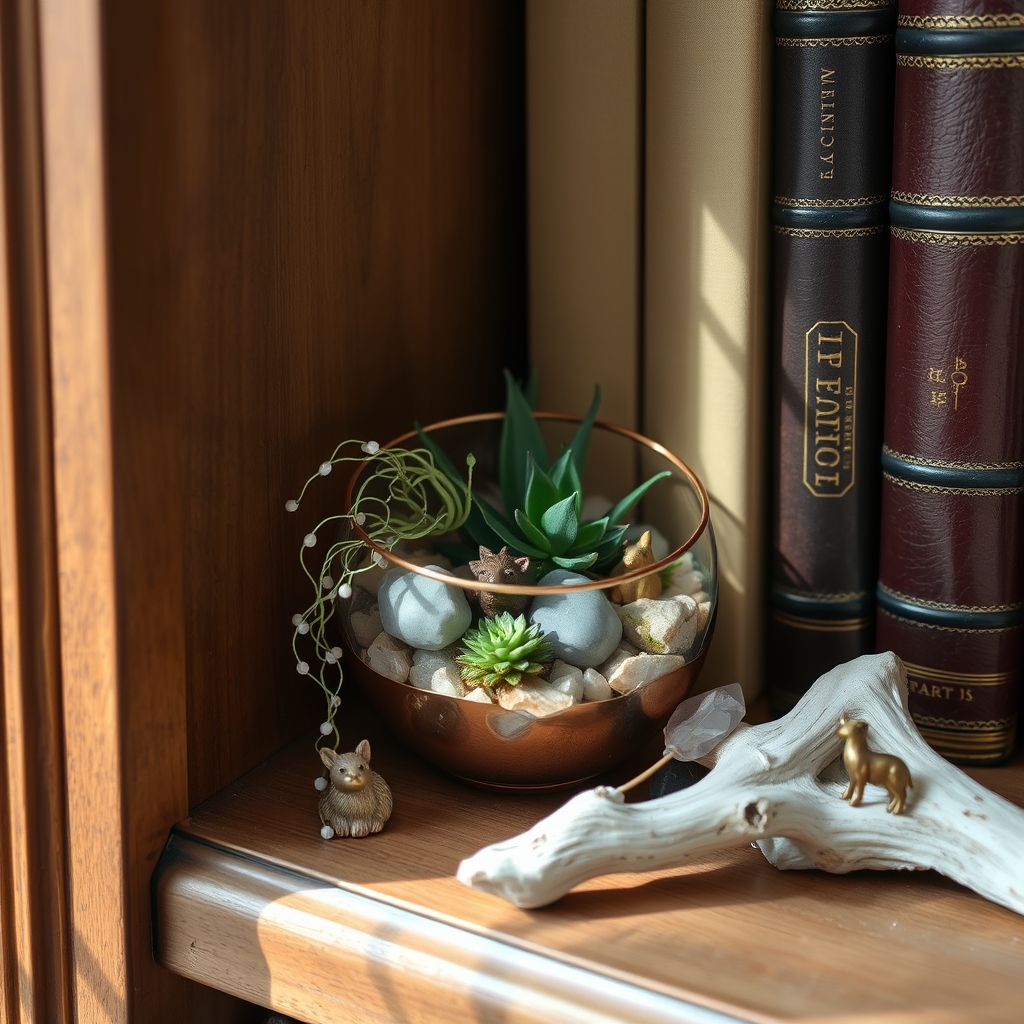
Mini garden vignettes on bookshelves combine small plants with decorative elements to create captivating miniature landscapes.
These artistic arrangements typically feature succulents, air plants, or small ferns nestled among tiny decorative items like ceramic figurines, small stones, or miniature garden accessories.
The vignettes can be assembled in small containers, terrariums, or directly on the shelf surface, often incorporating elements like moss, pebbles, or driftwood to enhance the natural aesthetic.
Each display tells its own story while adding depth and visual interest to bookshelf spaces, effectively transforming ordinary shelving into dynamic, living displays that serve as conversation pieces.
Mixing Preserved and Living Plants
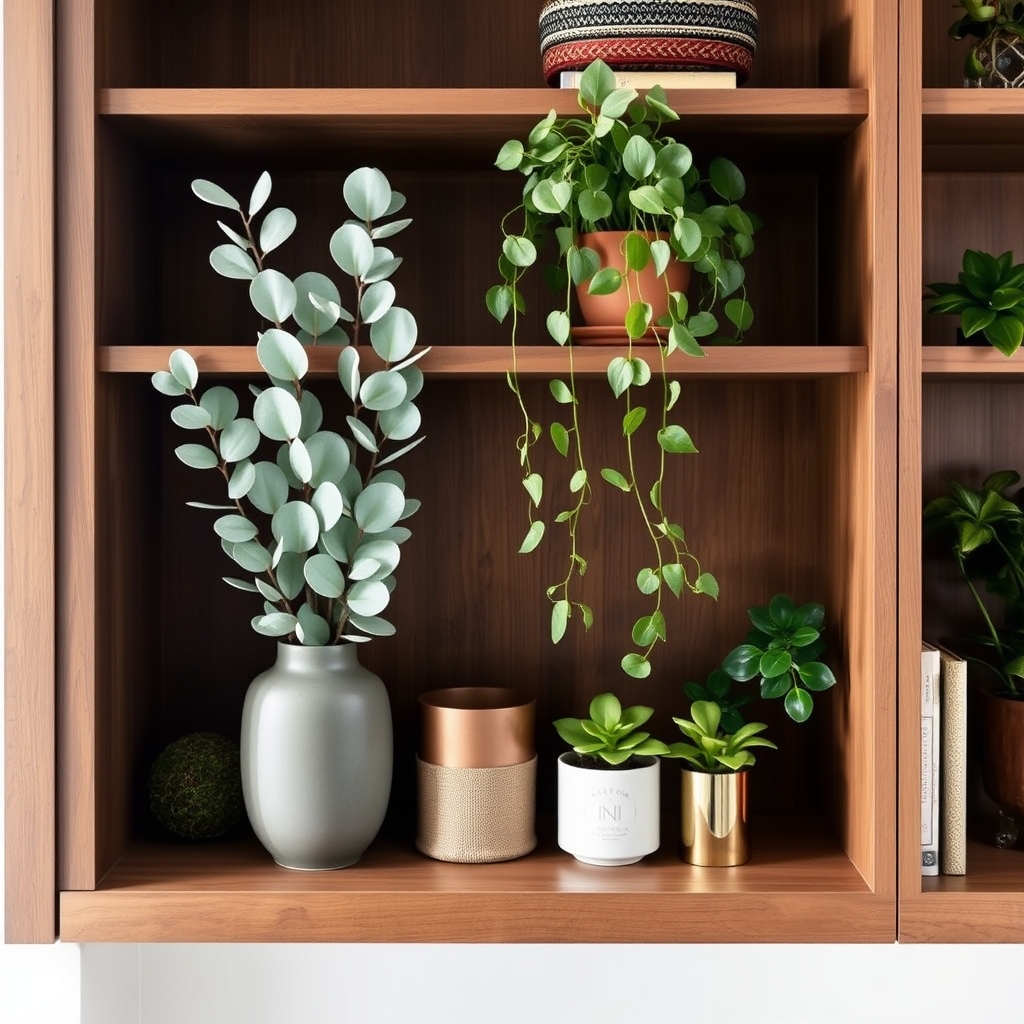
Mixing preserved and living plants creates a dynamic display that combines the low-maintenance benefits of preserved specimens with the vibrant energy of live plants.
Preserved plants maintain their natural appearance without requiring water or sunlight, while living plants add movement and seasonal changes. This combination allows for year-round greenery in areas with varying light conditions.
Key characteristics include:
- Textural contrast between preserved and living foliage
- Different shades of green working together
- Strategic placement with preserved plants in darker corners
- Living plants positioned near light sources
- Complementary pot selections that unite both types
- Enhanced depth through varied plant heights
- Extended decorative seasons using preserved flowers
- Reduced overall maintenance requirements
- Natural color variations throughout the year
- Balanced arrangement incorporating both preserved and living elements
Shelf-Safe Plant Lighting Solutions
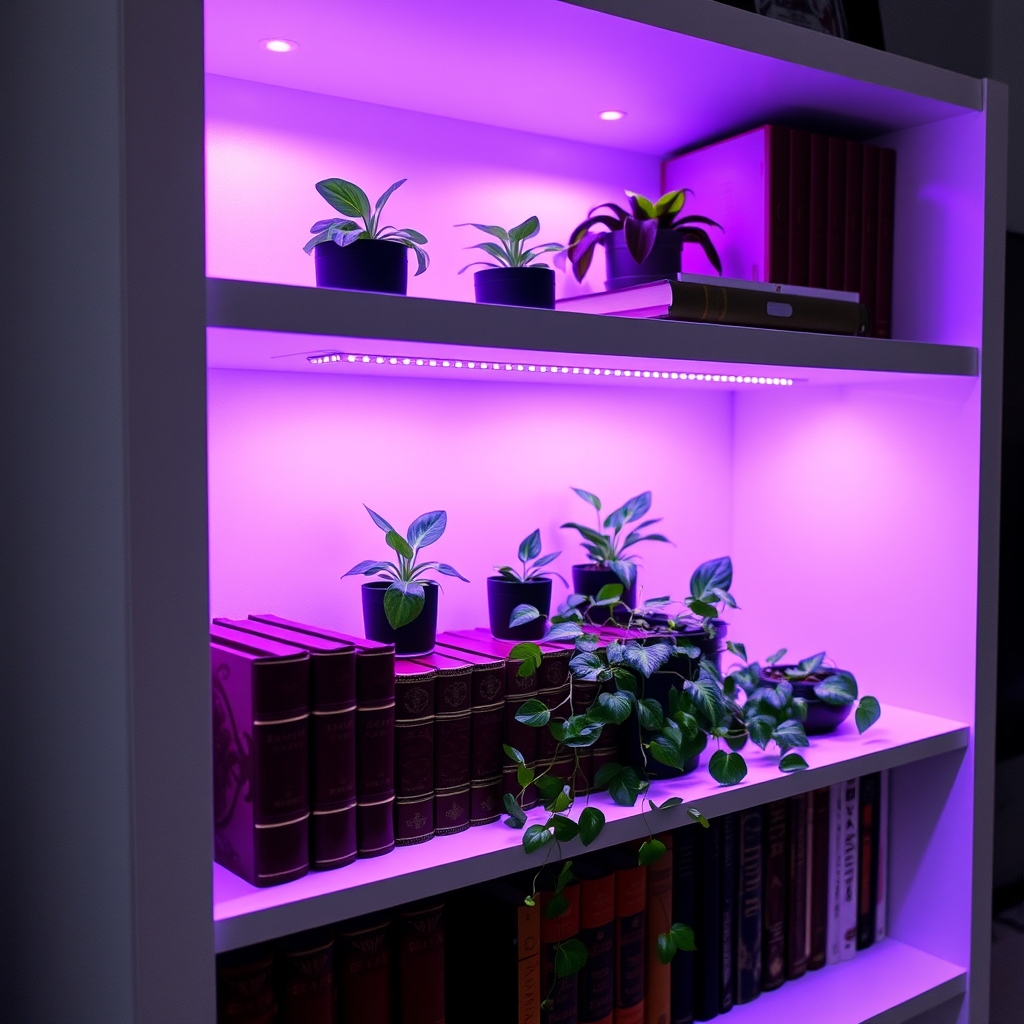
Shelf-safe plant lighting solutions consist of compact, specially designed lighting fixtures that provide adequate illumination for plants while maintaining aesthetics and safety on bookshelves.
These include LED grow lights in slim strip form, clamp-on spotlights, or small overhead units that attach directly to shelving.
Key features encompass adjustable light levels, timer functions, and space-saving designs that don’t interfere with books or decorative items.
Common varieties include:
- Thin LED strips that adhere underneath upper shelves
- Flexible gooseneck lamps that clip to shelf edges
- Battery-operated puck lights with plant-specific wavelengths
- Ultra-slim panel lights that mount between shelf levels
These lighting solutions typically emit full-spectrum light in subtle purple-pink or natural white hues, operating at low temperatures to prevent heat damage to nearby items.
Most modern options are energy-efficient and feature sleek, minimalist designs that blend seamlessly with contemporary bookshelf décor.
Low-Maintenance Options for Busy Readers
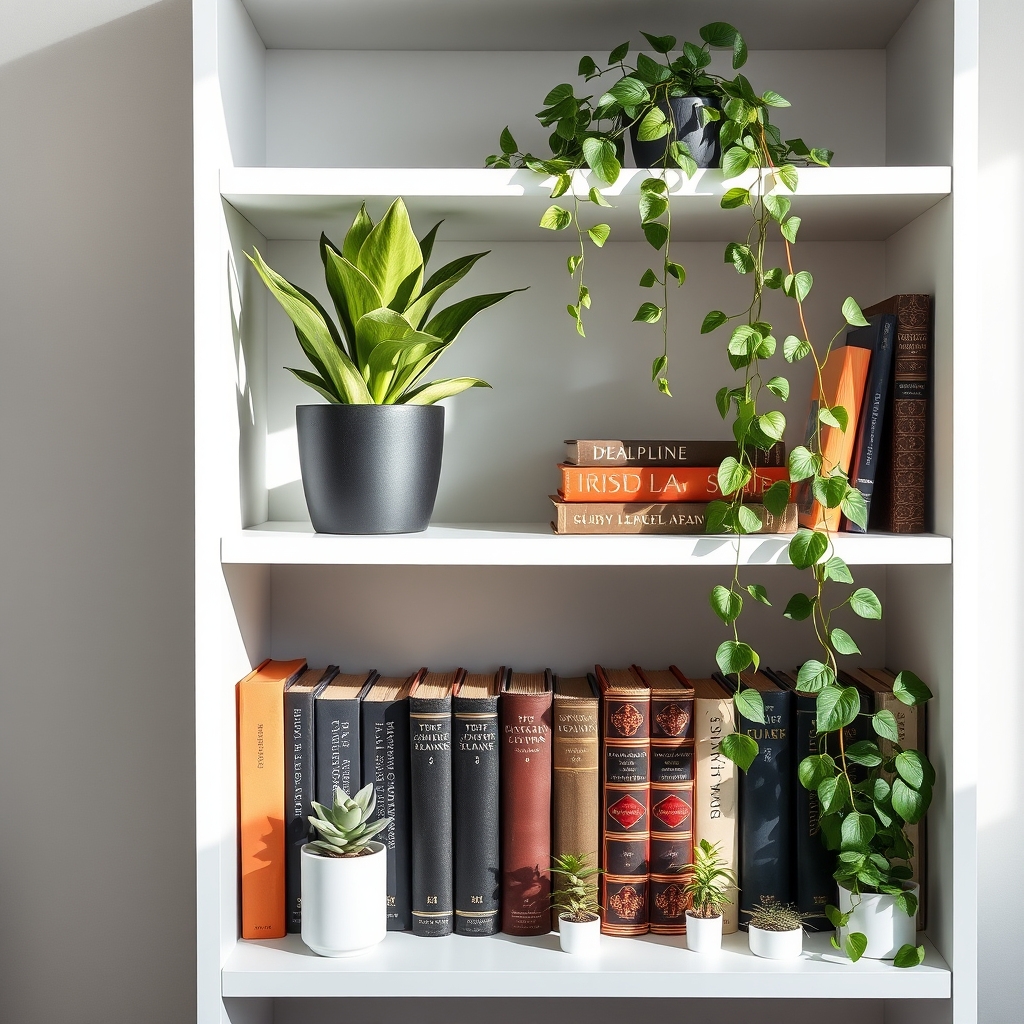
Low-maintenance bookshelf plants offer stylish greenery for readers who’ve limited time for plant care. These hardy varieties thrive in indoor conditions with minimal attention, making them ideal companions for book collections.
Key characteristics include:
- Adaptability to low-light conditions typically found near bookshelves
- Drought-tolerant nature, requiring watering only every 1-2 weeks
- Slow growth patterns that minimize pruning needs
- Resistance to common indoor pests and diseases
Popular low-maintenance options:
- Snake plants (upright, architectural leaves)
- ZZ plants (glossy, dark green foliage)
- Pothos (trailing vines with heart-shaped leaves)
- Chinese evergreen (compact, variegated foliage)
- Air plants (no soil required, minimal watering)
These plants can be displayed in:
- Small decorative pots
- Hanging planters
- Magnetic containers
- Glass terrariums
- Minimalist ceramic vessels
Seasonal Plant Rotation Strategies
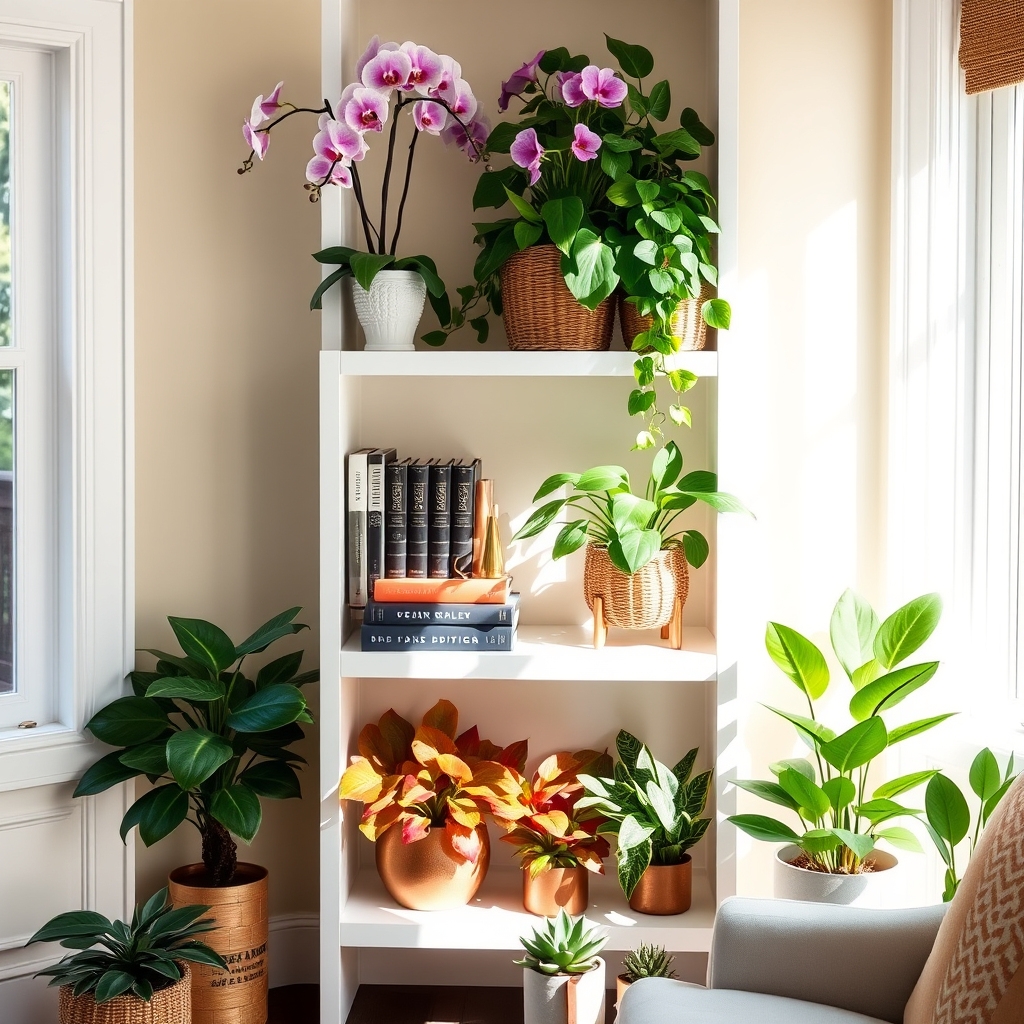
Seasonal plant rotation strategies involve systematically changing bookshelf plants throughout the year to maintain visual interest and accommodate different growing conditions. The approach features a dynamic display that shifts from spring blooms to summer foliage, autumn colors, and winter-hardy specimens.
Key aspects include:
- Spring: Featuring flowering plants like orchids and African violets
- Summer: Showcasing lush, leafy plants such as pothos and philodendrons
- Fall: Displaying plants with autumn hues like crotons and Chinese evergreens
- Winter: Incorporating hardy succulents and low-light tolerant plants
This rotation system ensures:
- Optimal growing conditions as seasons change
- Fresh decorative looks throughout the year
- Better plant health through seasonal adjustments
- Variety in shelf styling and arrangement
- Protection of plants from seasonal temperature fluctuations near windows
Plants are typically grouped by similar care needs and rotated based on light exposure, temperature changes, and seasonal growth patterns.
Color Coordination With Book Spines
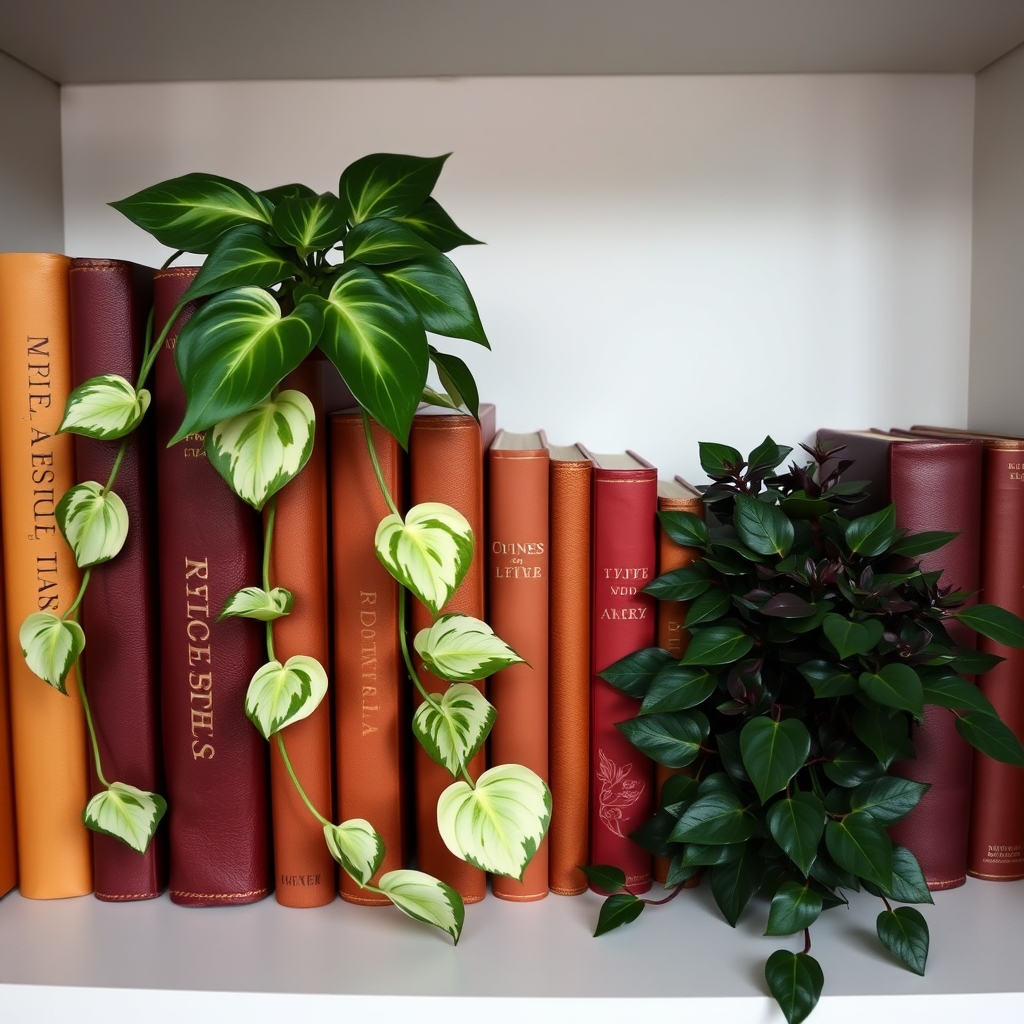
Color coordination with book spines creates a visually harmonious display by matching plant colors to the hues of book covers and spines.
Plants with deep green foliage complement darker book covers, while variegated leaves with white or cream patterns work well with lighter-colored spines.
Purple-leaved plants like Persian Shield or Chinese Evergreen ‘Pink Valentine’ can echo similar tones in book collections.
The arrangement can follow color-blocking techniques, where books are grouped by spine color and paired with correspondingly colored plants, or create purposeful contrast using complementary colors.
This styling approach transforms ordinary bookshelves into cohesive, artistic displays where literature and nature blend seamlessly.
